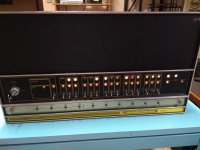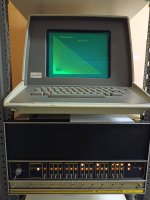thunter0512
Veteran Member
Recently I have been debugging and fixing a Nova 2/10 I found in a barn.
It has the following boards:
Best regards
Tom Hunter
It has the following boards:
- CPU
- 16 K core
- 8 K core
- Cassette I/O
- Cleaned out several decades worth of accumulated dust, spider webs, dead insects and other debris.
- Fixed the +15V rail in the power supply.
- Fixed the leaking filter capacitor issue which kept tripping the RCD.
- Replaced the broken AC3 examine/deposit switch.
- Replaced two of the broken console (front-panel) lights. I could only find 2 of the miniature lights locally but have more on order from both the US and China.
- Debugged an apparent problem on the console board and proved to myself that it is not the culprit. The problem is with the AC0-AC3 deposit switches where switch settings don’t take (i.e. a deposit behaves like an examine).
- After studying the CPU board schematics I gained a reasonable understanding of the processing for the ACx deposit machinery and finally traced the problem to a faulty "Console ROM 0" which does not assert the /1WEN when needed. I am not sure what the exact failure mode of this bipolar PROM is. It may be that the fuse "healed" or that the associated open-collector driver transistor has died.
Best regards
Tom Hunter


